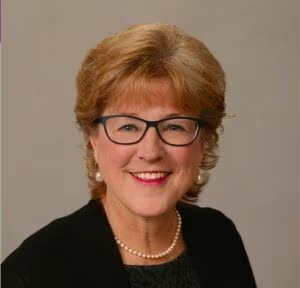touchTALKS Identifying, diagnosing and treating patients with later-onset SMA
Dr Julie Parsons reviews the diagnosis and approved treatments for later-onset SMA, highlighting their impact on the natural history of SMA.
Diagnosis of SMA in older adolescent and adult populations
Dr Julie Parsons describes the pathophysiology and clinical presentation of SMA, highlighting the considerations for differential diagnosis and the reasons for delayed diagnosis of patients with SMA type 3 and type 4.
view bio and disclosures 1/3 Next ChapterOverview of disease-modifying therapies and available data on their use in patients with later-onset SMA
Dr Julie Parsons reviews the mechanisms of action of approved therapies for SMA and summarizes key clinical trial results in children and adults.
view bio and disclosures 2/3 Next ChapterThe natural history of SMA and how this is changing with disease-modifying therapies
Dr Julie Parsons reviews the natural history of SMA and explains how available treatments are changing the course of disease by improving motor function and delaying disease progression.
view bio and disclosures 3/3 Take CE/CME TestOverview & Learning Objectives
Overview
In this activity, Dr Julie Parsons, a leading expert in spinal muscular atrophy (SMA), discusses the clinical presentation and diagnosis of later-onset phenotypes of SMA, before reviewing clinical trial data for approved treatments and how they can change the natural history of the disease.
This activity is jointly provided by USF Health and touchIME. read more
Target Audience
This activity has been designed to meet the educational needs of general and community neurologists, paediatric neurologists, paediatricians, primary care providers (PCP), neurology nurses and pulmonologists, who may be involved in the diagnosis and/or management of patients with SMA and practice in the USA.
Disclosures
USF Health adheres to the Standards for Integrity and Independence in Accredited Continuing Education. All individuals in a position to influence content have disclosed to USF Health any financial relationship with an ineligible organization. USF Health has reviewed and mitigated all relevant financial relationships related to the content of the activity. The relevant relationships are listed below. All individuals not listed have no relevant financial relationships.
Faculty
Dr Julie Parsons discloses: Advisory board or panel fees from Biogen, Genentech, Novartis and Scholar Rock. Grants/research support from Biogen, Novartis and Scholar Rock.
Content reviewer
Angela M. Hill, PharmD has no financial interests/relationships or affiliations in relation to this activity.
Touch Medical Director
Adriano Boasso and Hannah Fisher have no financial interests/relationships or affiliations in relation to this activity.
USF Health Office of Continuing Professional Development and touchIME staff have no financial interests/relationships or affiliations in relation to this activity.
Requirements for Successful Completion
In order to receive credit for this activity, participants must review the content and complete the post-test and evaluation form. Statements of credit are awarded upon successful completion of the post-test and evaluation form.
If you have questions regarding credit please contact cpdsupport@usf.edu.
Accreditations
Physicians
This activity has been planned and implemented in accordance with the accreditation requirements and policies of the Accreditation Council for Continuing Medical Education (ACCME) through a joint providership of USF Health and touchIME. USF Health is accredited by the ACCME to provide continuing medical education for physicians.
USF Health designates this enduring material for a maximum of 0.75 AMA PRA Category 1 CreditTM. Physicians should claim only the credit commensurate with the extent of their participation in the activity.
The European Union of Medical Specialists (UEMS) – European Accreditation Council for Continuing Medical Education (EACCME) has an agreement of mutual recognition of continuing medical education (CME) credit with the American Medical Association (AMA). European physicians interested in converting AMA PRA Category 1 CreditTM into European CME credit (ECMEC) should contact the UEMS (www.uems.eu)
Advanced Practice Providers
Physician Assistants may claim a maximum of 0.75 Category 1 credits for completing this activity. NCCPA accepts AMA PRA Category 1 CreditTM from organizations accredited by ACCME or a recognized state medical society.
The AANPCP accepts certificates of participation for educational activities approved for AMA PRA Category 1 CreditTM by ACCME-accredited providers. APRNs who participate will receive a certificate of completion commensurate with the extent of their participation.
Date of original release: 6 April 2022. Date credits expire: 6 April 2023.
If you have any questions regarding credit please contact cpdsupport@usf.edu.
Learning Objectives
After watching this activity, participants should be better able to:
- Recall possible symptoms of SMA in adolescent and adult patients and relevant differential diagnostic tests
- Appraise the role of current and future treatment approaches for improving outcomes in patients with older-onset SMA
- Evaluate how the natural history of SMA is evolving with the use of disease-modifying therapies
Faculty & Disclosures

Dr Julie Parsons
University of Colorado School of Medicine, Aurora, CO, USA
Dr Julie Parsons is Professor of Clinical Pediatrics and Neurology at the University of Colorado School of Medicine in Aurora, CO, USA. read more
She holds the Haberfeld Family Endowed Chair in Pediatric Neuromuscular Disorders and is co-director of the Neuromuscular Clinic at the Children’s Hospital Colorado.
Dr Parsons has an enduring interest in medical education and served as the director of the child neurology residency programme for 9 years.
Dr Parsons’ clinical interests include a wide range of neuromuscular diseases, such as muscular dystrophies, spinal muscular atrophy and myotonic dystrophies. She is an active participant and principal investigator for several clinical trials.
Dr Julie Parsons discloses: Advisory board or panel fees from Biogen, Genentech, Novartis and Scholar Rock. Grants/research support from Biogen, Novartis and Scholar Rock.

Register to touchRESPIRATORY for FREE
- Peer-reviewed journals and expert opinions
- Interactive CME and e-learning modules
- Video conference highlights
